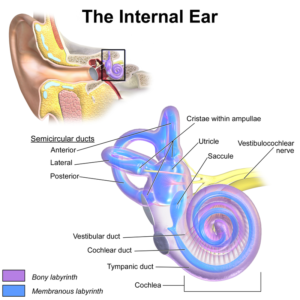The Kawar Protocol, otherwise called “The Spinning Protocol”, was developed by Mary Kawar MS, OTR after years of researching and studying the vestibular system. The Vestibular system resides in the inner ear and houses the cochlea, the semicircular canals, and the vestibule.  The purpose of the 3 semicircular canals is to tell the brain whether a person is moving forward, backward, left, right, diagonally, spinning or is upside down. It is this system that elicits righting reactions in our core, and our protective responses in our arms and legs when we move too far out of midline. Through her research, Mary Kawar determined that in order to optimally stimulate and organize the vestibular system, it was necessary to stimulate all three pairs of semicircular canals. She recommends a variety of movements that stimulate, one, two, or all three pairs simultaneously, and help a child organize the input received from the vestibular system to improve: balance, coordination, righting reactions, protective responses, and postural stability.
The purpose of the 3 semicircular canals is to tell the brain whether a person is moving forward, backward, left, right, diagonally, spinning or is upside down. It is this system that elicits righting reactions in our core, and our protective responses in our arms and legs when we move too far out of midline. Through her research, Mary Kawar determined that in order to optimally stimulate and organize the vestibular system, it was necessary to stimulate all three pairs of semicircular canals. She recommends a variety of movements that stimulate, one, two, or all three pairs simultaneously, and help a child organize the input received from the vestibular system to improve: balance, coordination, righting reactions, protective responses, and postural stability.
After a child is determined to be an appropriate candidate for vestibular rehabilitation by a qualified professionally trained OT in this area of Sensory Integration therapy, the child’s parents, teachers, and other team members may be trained to implement the Kawar protocol.